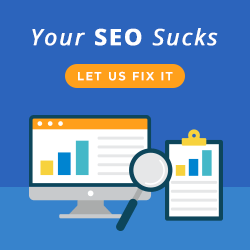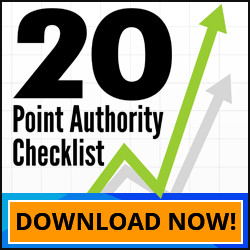No, it’s not a pro-wrestler or the name of an action movie… Google’s ”Top-Heavy” update, released in January 2012, targets websites overloaded with AdSense ads “above the fold” with very little content that’s only accessible if users scroll all the way down. So, why in the world would a website owner want to splatter their site with someone else’s ads?
Money, Money, Money!
You’ve got a website, it’s just sitting there, why not earn some cash on the side, right? Well, that’s what a lot of website owners are doing with something called Google AdSense. AdSense is essentially a “plug & play” money-making machine, whereby site owners can earn revenue when people click on the displayed ads. The more the ads get clicked, the more you earn. Why would Google create a product, then penalize you for it? Good question!
Because Google is all about delivering the best matches to their users, their quality team doesn’t like it when you make it hard for viewers to access the content they want. Even if it’s a result of promoting ads from their own Adsense program. With Top Heavy, pushing content to the bottom of your page to encourage people to click the ad links no longer works. If you have a site that sounds like this, and you might find it falling out of the top search results.
Don’t get me wrong, I’m not saying not to use Adsense, I’m just saying regulate those ads, keep them at a minimum on your site, and make sure you have sufficient and worthwhile content. But how do you know if you’ve got too many ads and too little content?
Enough Is Enough!
Let’s just say you’ve got a nice little website and you’ve place a few ads on there to top up your pocketbook. To make sure you’re not overstepping Top Heavy’s boundaries, go over to Google Labs and use their browser size tool. Once there, check for the “90% use case”, which is 970 pixels wide and 500 pixels deep, to make sure you’ve got enough reasonable content above the fold to engage users. Ideally, you want to do this for all of your pages if possible; more importantly, do it on the ones which have AdSense ads on them. If you find you have too many ads above the fold, simply remove them.
So you see, managing the effects that the Google Top Heavy has had on your site is actually pretty easy! Whew! 🙂
We Have Lift-Off!
Google will lift off the Top Heavy penalty as soon as your web pages have been adjusted accordingly and re-crawled. To make sure you don’t remain penalized longer than you have to, fix your pages as soon as possible.
So, the brutally named the Google Top Heavy Update wasn’t so scary after all, was it? For most people, making these changes will be pretty easy, so just follow the above steps and you’ll be good to go! If you want further clarity about which updates may have affected your site, then contact us today for expert advice on how to recoup your rankings. Click here to know more.


